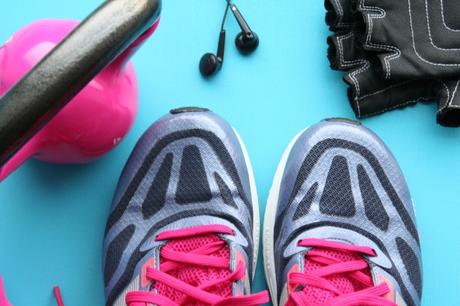
When most people think of workout "gear," it is relatively simple and straightforward. You need...
- workout clothes,
- headphones,
- a music player,
- a water bottle and
- a pair of running shoes.
Sounds simple enough right? When it comes to running shoes, though, you need to remember you need to get good quality shoes built for the type of activity you are doing. Plus you need to ensure you are changing your shoes often enough, so they are providing the cushioning and support you need.
How often should you be changing your running shoes? Let us go over a few things, so you are aware of the best time to switch to a new pair...
1. Your Running Mileage.
The biggest factor determining your running shoe lifespan is how many miles you have traveled. Consider the average pair of running shoes should give you around 300 to 500 miles worth, this can give you a relatively good indication of how long you can go. If you are running an average of 20 miles a week, this should amount to around 15 to 25 week's worth of usage.Keeping track of your miles, both those run and walked, is important so you know when your time is up with that pair of running shoes. If you are doing most of these miles on the treadmill, your shoes may look brand new, but keep in mind the padding in them may be anything but new!
2. Your Body Weight.
The next factor to think about is your body weight. Generally speaking, the heavier you are, the faster your shoes will wear out. There will be more stress coming down with each step you take, mostly wearing out the padding as you run.If you are over 150 pounds, you might only get the 300-mile mark with your shoes, while if you are under 150 pounds, you may be closer to the 500-mile mark.
You will need to judge for yourself how your shoes are feeling as you run in them day after day. If you start noticing sore and achy joints, this is a good sign it may be time to change those shoes for a new pair.
3. Where Are You Running?
Finally, think about where you are running. Are you running primarily in open areas or are you running in forests and off-road trails? If it is essentially flat ground running you are doing; you may get a little more life out of your shoes compared to if you are running on terrain not as even. The support and stabilization of your shoe will be tested more in those scenarios, thus leading to faster wear and tear.Keep these points in mind as you go about your workout sessions. Having a good pair of running shoes is vital to your success, so it is essential you do not overlook this critical element.
Although managing Type 2 diabetes can be very challenging, it is not a condition you must just live with. Make simple changes to your daily routine - include exercise to help lower both your blood sugar levels and your weight.
Article Source: http://EzineArticles.com/9666408

